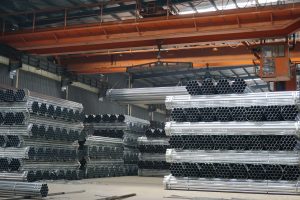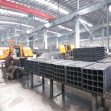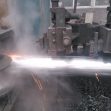The elasticity of supply is significantly constrained
2021 is a veritable turning point year for China’s steel industry. Apart from the downward shift in steel demand we mentioned earlier, the most important turning point is that Chinese steel production may be entering a downward cycle after two decades of continuous growth. The reason to make such a judgment, the main reason is that the development of the steel industry will be constrained by the “double carbon” policy for a long time in the future. 2021 is the first year of the two-carbon policy, and there is still a long way to go to reach a carbon peak of round steel pipe by 2030 and carbon neutrality by 2060. As one of the major carbon emission source industries, steel industry will face the constraint of carbon reduction task for a long time. As a result, the elasticity of steel supply will be significantly limited.

Before we discuss the production of rebar, let’s take a look at a set of data: China’s crude steel production in 2020 is 1.065 million tons, and the crude steel production in 2021 is expected to be 1.015 million tons. The annual production decline is around 50 million tons, down nearly 4.7% year on year. The production of square steel pipe in 2020 is 265 million tons, and steel rebar production in 2021 is expected to be 251 million tons. The annual production decline is around 14 million tons, down nearly 5.3% year-on-year.
Since the implementation of the policy of “double control of energy consumption” and “flat control of output” began in mid-2021, steel output began to decline year-on-year from July, and the decline expanded month by month. According to the data of the National Bureau of Statistics, from January to June 2021, the average monthly output of rebar is 22.75 million tons; From July to December, the average monthly production of rebar is expected to be 19.15 million tons. The average monthly production of rectangular steel tube in 2020 is 20.9 million tons. The average output in the second half of 2021 was 15.8% lower than the average in the first half, and 8.4% lower than the average for the whole of 2020.
Next, we deduce the output of rebar this year. Based on the “two-carbon” policy constraints and the Beijing-Tianjin-Hebei autumn and winter production restrictions, we take the average monthly production of rebar in the second half of last year of 19.15 million tons as the reference. Under the optimistic expectation, the average monthly production of China hollow section tube is expected to rise 5% from the reference base this year, then the annual production of rebar is expected to fall by 10 million tons, a decline of 4%. Under the neutral forecast, the average monthly production of rebar is expected to rise 3% from the reference base this year, and the annual production of rebar is expected to decline 14 million tons, a decline of 5.8%. Pessimistic expectations, this year’s average monthly production of rebar is expected to be flat with the reference benchmark, the annual production of rebar is expected to decline 21.5 million tons, a decline of 8.5%.
Tel: +86 18202256900 Email: steel@fwssteel.com










